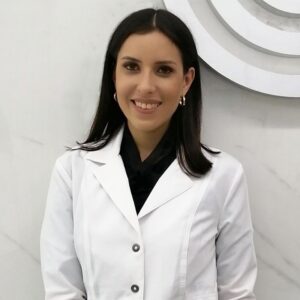Answer from: Maria José Mendiola, MD, MSc in Human Genetics, MSc in Science Communication, ObGyn
Clínica Monterrico

Is defined as the presence of two or more cells in lineages with different genotypes arising from a single seek good in a single individual. In contrast, if distinctive cell lines came from different seagulls, the term is now schemerisms. Genetic mosaicing is a possibility mutation after is for so since another human being requires countless cells divisions for its development and every cell division carries a risk of genetic mistakes, each person has at least one distinct cells in their body thus every individual is a mosaic so, also probably all the cells within every single human being encompass numerous mutations that could potentially explain every human genetic disease but only a minimum of these mutational events affect individuals who are well-being while most aren’t phenotypically silent in this case mosaicism appears to be responsible for enormous amount of pathologies chromosomal and abilities such as Turner syndrome, some types of cancers, some tumors so to point out, to sum up, we should remember that a seagull in humans forms from the portion of sperm that has 23 chromosomes and an album that also has 23 chromosomes inside good divides by mitosis to form the whole human body but ideally all the scent of the cycled mascaras must have an identical genome but in this case, in the mosaic system, it does not always happen. It occurs at one of the stages after the cycle forms so, if we could have two types of mosaicism, the somatic muscle system or the germline the somatic, is when more than one cell a lineage in somatic cells although it does not pass to the offspring as the sperm of all sides and they are not affected but in the other half we could have a general amount of systems in this case more than one cell lineage in your line cells this passes to the off screen so in this case there is it is affected the sperms and the all sides in in this person.
Answer from: Andrew Thomson, FRCPath
Centre for Reproduction and Gynaecology Wales (CRGW)

So following pre-implantation genetic testing, you may get a different diagnosis of each embryo. So you may get a euploid which is genetically normal, aneuploid which is genetically abnormal (so there’s too many chromosomes in there) or you may get what’s called a mosaic embryo which means some cells have a normal set of chromosomes and other cells don’t and it’s about the percentage of cells in that sample. So the wrong number determines whether you get a high-level mosaic which shouldn’t be used or a low-level mosaic which could be used after some genetic counselling and it’s one of those real gray areas and will vary from clinic to clinic about who will use them and who won’t use them. The other thing you have to bear in mind is they where the biopsy of the blastocyst is taken from, is taken from the trophectoderm cells which goes on to make the placenta and those cells may not represent what’s in the inner cell mass which is the bit that goes on to make the baby. So it’s a real sort of challenge to work out what is a viable embryo, what’s not a viable embryo.
Answer from: Douglas Lester, PhD, MSc, BSc (Hons)
Fertility Genomics

Mosaicism means that up to half of the cells in your body have a different DNA makeup from the other half of the cells. If the sperm fertilizes the egg and you have one cell that divides the two. If one of the cells mutates in a particular gene at that stage, say a fertility gene. When they go on to divide two to four, then you have two cells with this mutation, two cells normal, then they divide to eight, your four cells normal, four is not. And this continues, the millions of cells of your body; you can be a mosaic, and you’re not half yellow and half green. You look normal, and most of your DNA is the same. But take the fertility gene; it means half of your sperm may be infertile in a man, and half of them are normal. This means that you could be subfertile because although you look like you’re producing the same amount of sperm, half of them will never fertilize, whereas the other half will. You may need more attempts to get fertile.
Answer from: Nurit Winkler

Technology nowadays for testing embryo’s is really advanced so now we do not just get normal or abnormal, we get much more information where they tell us about something called mosaic embryo’s meaning embryo’s that have some normal cells and some abnormal cells. So the technology is very advanced and I am a big believer in it and that’s why most of our cycle is a frozen cycle.
Answer from: Alessandra Parrella
IVF-Life Group

Regarding the mosaic embryo there are different types of grade or grading of mosaic embryos. Usually in this case it is recommended to speak with geneticists and understand if the embryo that was classified as mosaic can be transferred or it is better not to proceed with it and possibly avoid pregnancy loss.
What is genetic mosaicism and how does it arise?
Mosaicism occurs when a person has two different sets of cells in his or her body. Those cells have different DNA. Does it have impact on fertility?
Related questions
What is the PGT-A strategy for patients with implantation failure?

What are gene mutations and how can they affect my fertility?







